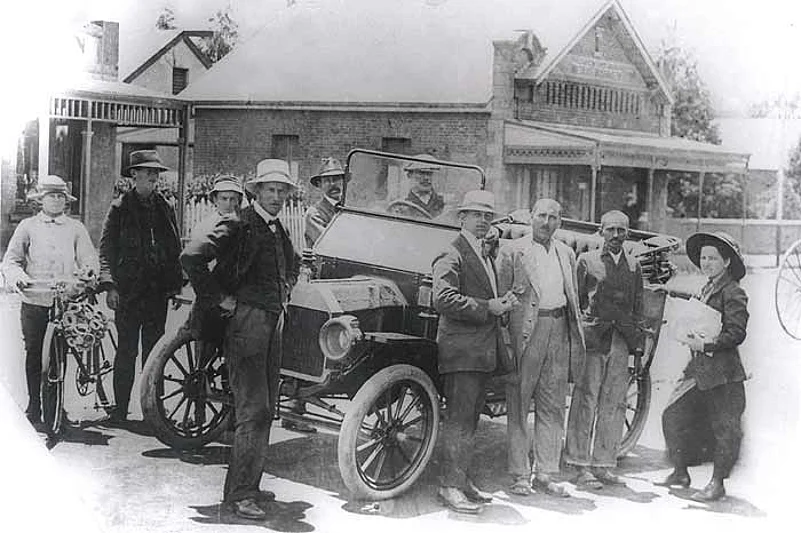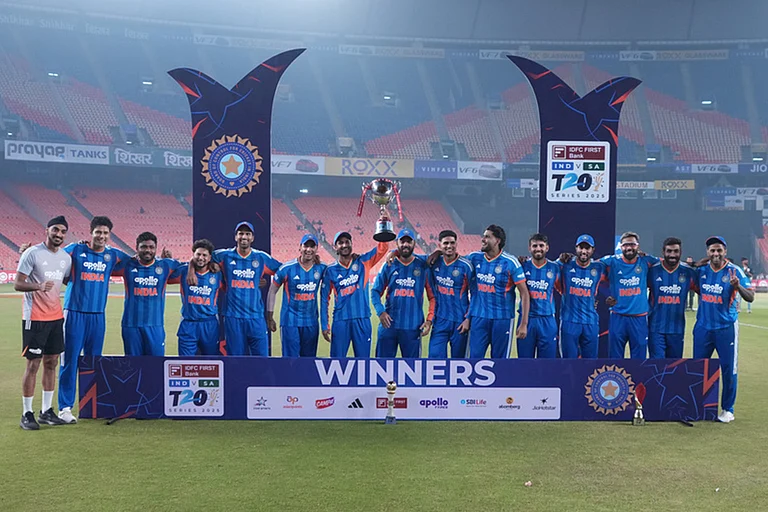“Oh God”, Gandhi once said, “save me from my friends, followers and flatterers”. It’s remarkable how Gandhi—someone who seems to transmit a clear, direct message, whose life seems to follow a defined parabola, whose place in history we are sure we know—continues to surprise and unsettle. In his own life, he went through a parade of identities, and so too in his afterlife. But it’s not just that each age will have it’s own Gandhi. There is something deeply discomfiting about the life as it was actually lived—before it was tidied up by his self-appointed friends, followers and flatterers into a Life that now apparently requires protection by our politicians.
Gandhi appeared to embody harmony and unity, yet his own life consisted of anything but those qualities—often impulsive, inconsistent, conflictual, fragmented. He would launch political initiatives like satyagrahas and civil disobedience, then abruptly end them; he would establish communities and ashrams, and move on; he would win the leadership of the Congress, and then retire to spinning and toilet cleaning; he would enter into intimate friendships, then turn away. He insisted that his own life and action was of a piece with his thought and principles—yet repeatedly they pulled in different directions.
So it is common to search for some unifying thread to his life: something that can explain the eccentric shape of a life at once monumental and elusive to the naked eye. Some have delved into psychology, some look to religion and ethics, others to political opportunism. Joseph Lelyveld, in his new portrait, hopes to find it in Gandhi’s fundamental feeling for the lowliest—and he wants to show that such empathy wasn’t a natural stance for Gandhi, but one won (and only ever partially) through his experiences—and which required Gandhi to struggle with his own prejudice-bound self.
That emphasis leads Lelyveld to focus his intellectual energies on the twenty-two years that Gandhi spent in South Africa. Those years, Lelyveld claims, were formative, taking Gandhi to the belief—well-founded, but never quite as well-founded as Gandhi himself liked to think and put about—that he could see the world from the bottom up, that he could fathom as few others the needs and hopes of the most oppressed, and that he had therefore an unquestionable right to speak for them.
Lelyveld, a former senior journalist and editor with the New York Times who has done stints in both South Africa and India, ought to be well-placed to bring news of Gandhi’s time there, and the first third of his book, devoted to Gandhi in South Africa, is by far the most illuminating and worthwhile.
Worthwhile for two reasons. Lelyveld shows in a more thorough way than before Gandhi’s deeply ambiguous, struggle-filled efforts to deal with religion, caste and race in South Africa. What Gandhi experienced in South Africa, through his close encounters with the Muslims, lower castes and indentured labourers of the Indian community, and more incompletely through his more distant relations with Africans (whom he largely excluded from his struggles to win rights), would serve as the psychic material out of which he forged his distinctive universalism—a universalism rooted in the claims of the minority and the marginal.
The second reason is that this book helps us to better understand the steps by which Gandhi came to experiment with and ultimately dispense with that bedrock of any—and especially Indian—society: the family. Gandhi treasured domesticity, but despised the family. He came to see the family as the channel through which were transmitted the poisons of caste segregation, religious intolerance and material possessiveness—the entrapments of purity and property. Breaking the family’s monopoly over domesticity was perhaps Gandhi’s most socially radical move—and it was only possible for him to do this in South Africa. There, he could discover new forms of domesticity—with individuals, couples, communities.
In 1904, Gandhi met Henry Polak, an erudite 21-year-old Johannesburg editor, who discussed Tolstoy with Gandhi and introduced him to the work of John Ruskin—which immediately inspired Gandhi to set up Phoenix Farm, his first experiment in communal living. His own family, Kasturba and their four sons, drove him batty—and even before Phoenix Farm got going, Gandhi had invited Polak into his household. A couple of years later, Gandhi would himself walk away from Phoenix, leaving behind his wife and children, to move in with Polak and his young wife—the first of a procession of inventive menages that Gandhi would create for himself.
The oddest—and yet in some ways most direct—of these domestic try-outs was the almost two years he enjoyed with Hermann Kallenbach, a ‘muscle Jew’ from East Prussia—gymnast, athlete, successful architect and wealthy bon viveur. Gandhi closed down these last two of his companion’s activities, but not before Kallenbach’s wealth was used to purchase the 1,000 acres that became yet another communal laboratory, Tolstoy Farm. Before the farm, the two men lived together in several properties of Kallenbach’s, and for a while also in a tent.
For anyone who has read Gandhi’s letters to Kallenbach (unfortunately we don’t have Kallenbach’s—Gandhi destroyed them), full of playful teasing (Gandhi, ‘Upper House’, always addressed his partner as ‘Lower House’), anyone who has seen the careful way in which Kallenbach preserved everything and anything to do with his time with Gandhi, it is impossible not to conclude that this was indeed an extraordinarily deep and loving friendship. It clearly involved physical intimacy—though whether related to reasons of health, or to passion we shall never know. Gandhi had by this point adopted celibacy, and he imposed it upon Kallenbach—though with what rigour we also cannot know.

Gandhi saw the family as the root of all social ills: Kasturba with her three sons and nephew soon after their arrival in South Africa in 1903. ( Photographs Courtesy: National Gandhi Museum)
It’s actually rather wonderful to notice these things about Gandhi. It confirms him as one of the greatest experimentalists that India has ever produced, experimenting with truth, in pursuit of truth, in a way that was more radical than perhaps any Indian before or after him. It seems absurd to reduce Gandhi’s profound and vast existential experimentalism to the cosiness of a gay relationship—as we’ve done, ahead of reading Lelyveld’s book and led by the suggestions of a sour British historian-reviewer.
Friendship is the crucial word here. For what we can see is how, for Gandhi, friendship would become the highest form of human relationship—a bond devoid of instrumental aspects, purely voluntary, and between equals: compelled neither by legal contract nor instinctual passion. In later life, it was friendship that Gandhi insisted on as the basic political relationship—one that could convert the enmities of religion, inequalities of caste, or injuries of imperialism, into mutual human recognition. It was friendship that Gandhi sought with Jinnah, Ambedkar and Mountbatten—as well as with those more intimate with him.
His interest in celibacy, though usually explained in terms of his interest in Brahmacharya, was not merely about abstinence: it was about abstinence in order to enjoy the pleasures of disinterested companionship, friendship.
Gandhi was prone to infatuations—after brawny Lower House, in later life it would be more ethereal creatures like Esther Faering and Saraladevi Chaudhurani. But at the end of the day—as his letters to Kallenbach and to others display, letters concerning what Gandhi perhaps mock-solemnly called the ‘food question’, which detailed precisely how many nuts he had eaten, how much milk he’d consumed, and railed against ‘full-mealers’—Gandhi was more interested in his digestive rather than his sexual organs: in mastication, not masturbation.
Lelyveld is gently persistent in his efforts to elicit gaps between Gandhi’s life as it was lived and as he later chronicled it—between Gandhi the activist and the memoirist. In the case of Gandhi’s South African life, Lelyveld concludes that while it was transformative for Gandhi himself—furnishing him with perceptions, commitments and methods, that would later define his Indian politics—it had, contrary to what Lelyveld terms ‘Gandhi’s somewhat rosy version of his heroic personal history’, decidedly less impact on the politics of his adopted home.
Indeed, Lelyveld’s account of Gandhi’s South African life is far more subversive not for what it has to say about the Kallenbach connection (details of which have after all been known for quite sometime), but in his claim that Gandhi left South Africa at the end of 1914 not as the victorious leader of a satyagraha movement that had delivered rights to indentured Indians, but rather as part of a deal with Jan Smuts, one that in fact left Indian labourers worse off. South Africa helped make Gandhi, but he had less impact upon it than he liked to claim, or than post-apartheid South Africa—which has made Gandhi one of its heroes—would prefer to think.
The Gandhi that Lelyveld brings back to India is a man fitfully awakened in his human empathy, and also one coming quickly to a sense of his political command. What is striking is to see how Gandhi—the most exotic, weird human the Indian subcontinent has ever produced—soon after his return to India, had acquired for himself an undisputed claim as the man who knew the Indian masses best, and could speak on their behalf. “Without any impertinence I may say I understand the mass mind better than anyone amongst the educated Indians”—yet, coming from a man back in the country a mere five years after over twenty abroad, it was an assertion full of impertinence. How on earth did he manage to make such claims credible to so many for so long?
No one—biographer, historian or acolyte—has ever really managed to explain this. Was it all a rhetorical performance—as the rising scholarship on Gandhi’s symbolism, body, theatricality, would have us think? Was it his ideas—as the studies of his philosophical, religious and ethical beliefs claim? Was he just a masterly political fixer—as accounts of his capture and manipulation of Congress tell us? Sheer force of personality, charisma? Or was it that goat’s milk he had begun to drink—as Kasturba, who encouraged him to indulge, might have liked to think?
Lelyveld himself concentrates on Gandhi’s social vision. He explores the Indian Gandhi through a series of episodes which he believes reveal both Gandhi’s inner conflicts and his struggles with fellow Indians: his standoff with Ambedkar at the London Round Table Conference and then at Poona; the Vaikom satyagraha and Gandhi’s attempts to breach upper-caste barriers to temple entry; his running skirmishes with Jinnah; and his final epic failure to stop communal violence by exiling himself to Noakhali.
Like all who write about Gandhi, Lelyveld has to confront the shifting meanings, obscurities, ambiguities, inconsistencies, of Gandhi’s actions. And it is one of the virtues of Lelyved’s book that it does not try to tidy these up in a simple ‘message’. Nor does he opt for the other easy judgement: which would see Gandhi’s inconsistencies as evidence of his hypocrisy. Yet what he does end up with is less than remarkable. As he traces, for instance in his interesting exploration of Gandhi’s Vaikom satyagraha, the different messages Gandhi was sending to different interlocutors and audiences, his seemingly calculated fluidity of position even while claiming to stand for principles, Lelyveld finds himself concluding: “What really shows here is the difficulty of being Gandhi”. No one, I think, ever did imagine it was easy.

M.K. Gandhi was no prim pope of non-violence: in front of his Johannesburg office with secretary Sonja, editor and friend Henry Polak and others, 1906.( Photographs Courtesy: National Gandhi Museum)
Like every good journalist, Lelyveld is a skilled rhetorician in the art of knowingness. Wherever information is sparse, he resorts to the leading question, planting an idea even as he denies it evidentiary status: “Could this have been such an occasion?”; “Did it involve the day’s events? We’ll never know”; “Could the example of the white mine workers have served as Thambi Naidoo’s mustard seed” (and that’s all just on one page, admittedly a passage that represents a rather critical—if non-weightbearing—bridge in his interpretative narrative). The reader will encounter a fair sprinkling of terms like “possibly”, “probably”, and “it’s not far-fetched to think”. Leyveld’s style can be engaging, but he is also often at risk of achieving a certain sophisticated banality.
In assessing Gandhi’s legacy, Lelyveld marks its severe limits. And yet. It is true, as Lelyveld insists, that Gandhi did not abolish untouchability. But he did de-legitimise it. It is true, as Lelyveld tells us, that Gandhi did not succeed in cementing Hindu-Muslim unity. But he did make all thinking Indians feel embarrassment and shame when religious violence and bloodletting occurred. Unlike a Lenin or a Mao, Gandhi’s chosen instrument of change was not the state, but the imagination. His work was to transform belief: more difficult, slower, but perhaps in the end, more enduring?
Joseph Lelyveld’s book arrives in India apparently already pre-read and certainly pre-judged. We need to put aside that false knowledge—so we actually read and genuinely discuss it. We can then, finally and thankfully, hope to move into a new phase of biographical scrutiny of figures like Gandhi—where basic questions can be raised, taboos explored, and where we can start to see them as humans in hard times. Studies by Rajmohan Gandhi, Narayan Desai, Tridip Suhrud, and now Lelyveld—all let us see Gandhi not as the prim pope of non-violence, but as a more subtle being, often in emotional turmoil, ragged in his personal relationships and cruel to his family, a better starter than finisher, dependent on entourages of aides and adorers, selfless and egotistical by turns—and always able to command the deepest loyalty.
The idea that a politician like Narendra Modi can self-erect to defend Gandhi’s legacy, that he and Gujarat are Gandhi’s guardians against supposed charges of perversity and racism, is laughable. I well remember sitting in a Gandhinagar cinema a little more than a decade ago, at the very time when Modi was manoeuvring himself into power in that city, watching the film Hey Ram—and can never forget how, at the very moment when Godse is shown pumping bullets into Gandhi, the cinema hall erupted into wild applause to celebrate Gandhi’s death. I remember too watching the West Indies playing a Test match at Ahmedabad’s Motera ground—and when they took to the field, being pelted by bananas and greeted by monkey whoops. Today’s Gujarat, before it can imagine it has any claims to Gandhi, let alone to defending his memory, has a long way to go.
(Sunil Khilnani is author of The Idea of India)
























